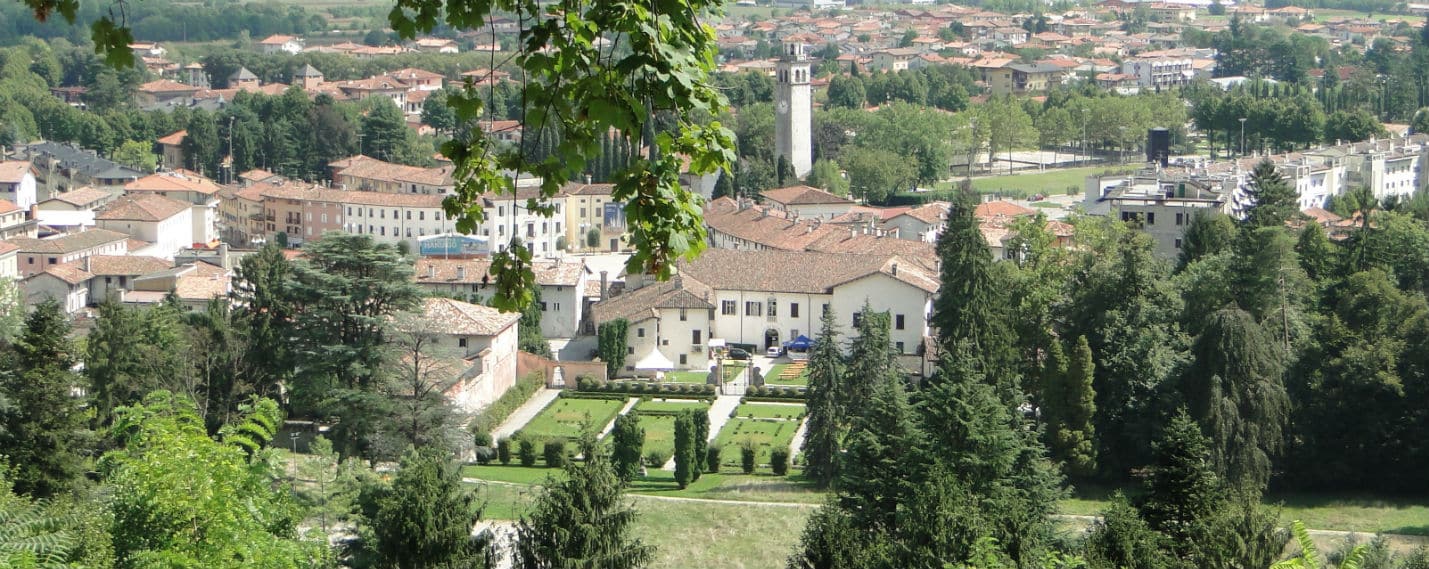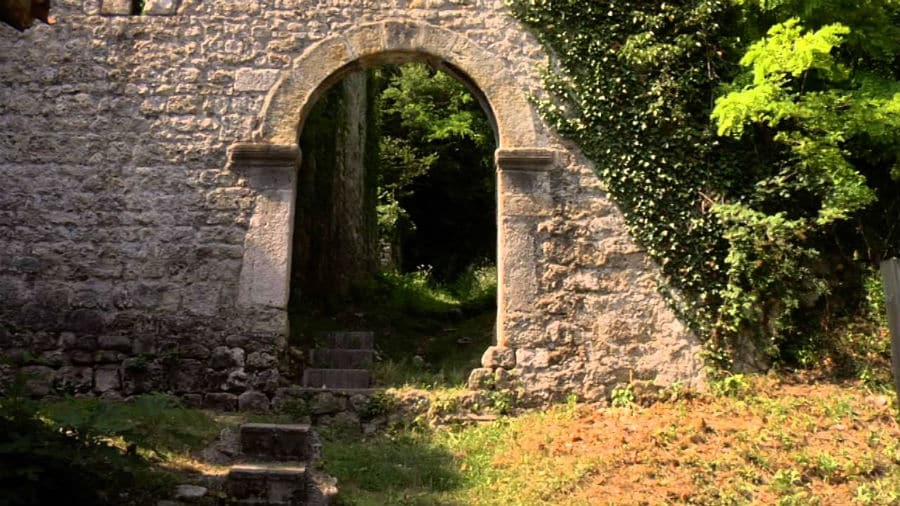The castle of Maniago is a castle of the XII century and is located on the slopes of monte Jôf, in a dominant position with respect to the actual village. It was built to solve the problems that the patriarchate of Aquileia had after confirmation of the donation of the lands of the feud maniaghese to Ronaldo (patriarch of Aquileia) by Emperor Otto II : The distance between these lands and Aquileia not made it easy to their administration. In addition, with the formation of the great feud of Spilimbergo (that stretched along the Tagliamento river, until Sbrojavacca), consolidation sestensi possessions in Val Cellina, possession of the Abbey of Millstatt of territory of Maniago Free, the settlement of Polcenigo to Mizzah and of the Abbey of Pomposa to Fanna, the small feud might suffer an attack at any time. It was therefore necessary to build a castle and especially to resort to a “custoria”, i.e. to a “feud of abitanza”.
On 15 December 1277 the Flagogna sold their part of the castle and their rights vassallatici to Olvrando of Maniago, which subsequently built a his dwelling within the first ring of walls (normally identified with the “domus de Medio” for the presence of the private courtyard, indicated by sources) to consolidate its position within the feud. In 1309, due to some of the issues of the borders and of grazing between the countries of Maniago and Fanna, the castle underwent a new siege, defended by the count of Montepace (commander of the patriarchal weapons); rejected the besiegers with a sortie, he Walterpertoldo escape of Spilimbergo and caught Henry of Prampero. Subsequently Olvrando undertook to buy in various divestitures the possessions of Polcenigo and Pinzano. The Siege of 1318 was due precisely to the desire to oust the Pinzano from the castle.
In 1377 Nichilo receives for himself and his brothers Bartolomeo Rambaldo and the investiture of the castle, the village, of forts, the tower, the standings and of the Palazzo Patriarcale. During the struggles for the appointment as patriarch of Philippe d’Anjou, the lords of Maniago paid for fidelity to the Friulian Alloy (in which they were entered in 1385) undergoing the umpteenth siege in 1387; they were in fact attacked by the troops of Francesco da Carrara, but despite the massive use of artillery, the castle resisted. In June 1420 the castle was occupied by the Venetians, and immediately after Bartolomeo di Maniago swore allegiance to the Serenissima receiving in exchange the investiture of the fief to life. On the occasion of the Turkish invasion of 1467, were reinforced the walls, but after the abandonment at the beginning of the ‘500, and the earthquakes of 1511 and of 1575 began the decline of the castle. In 1630, with the death of an old lady who had not wanted to move elsewhere, the castle went definitively into disuse.



